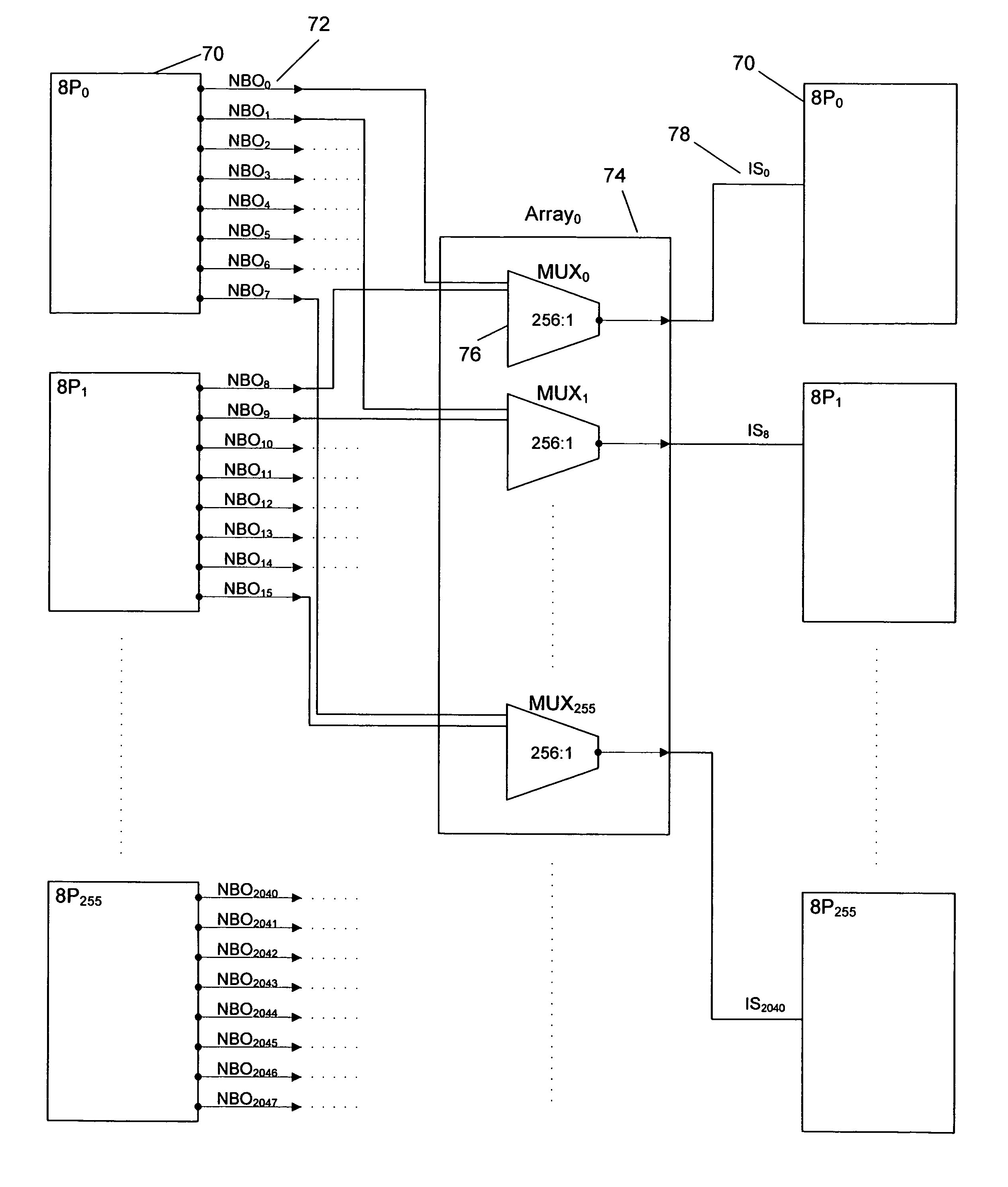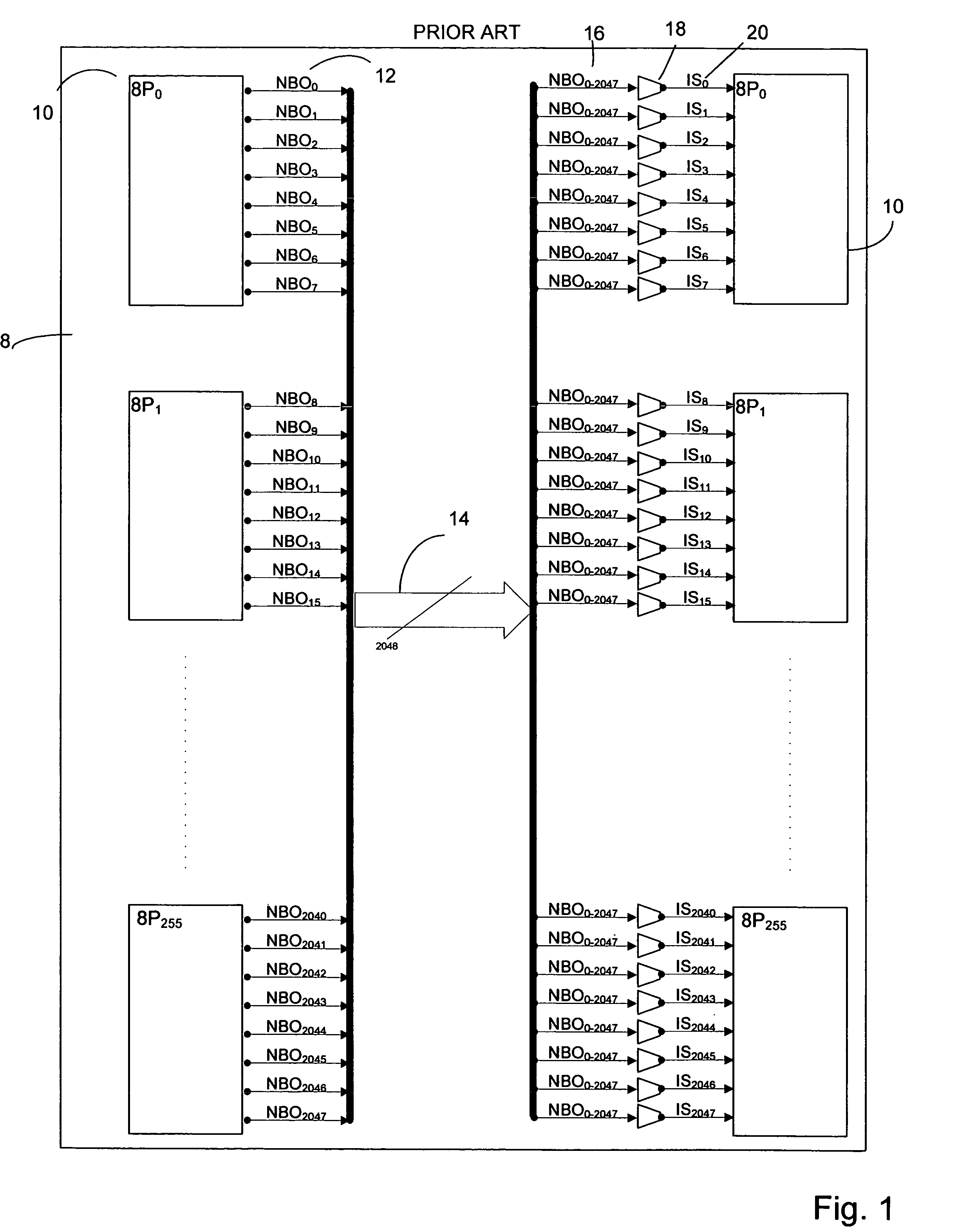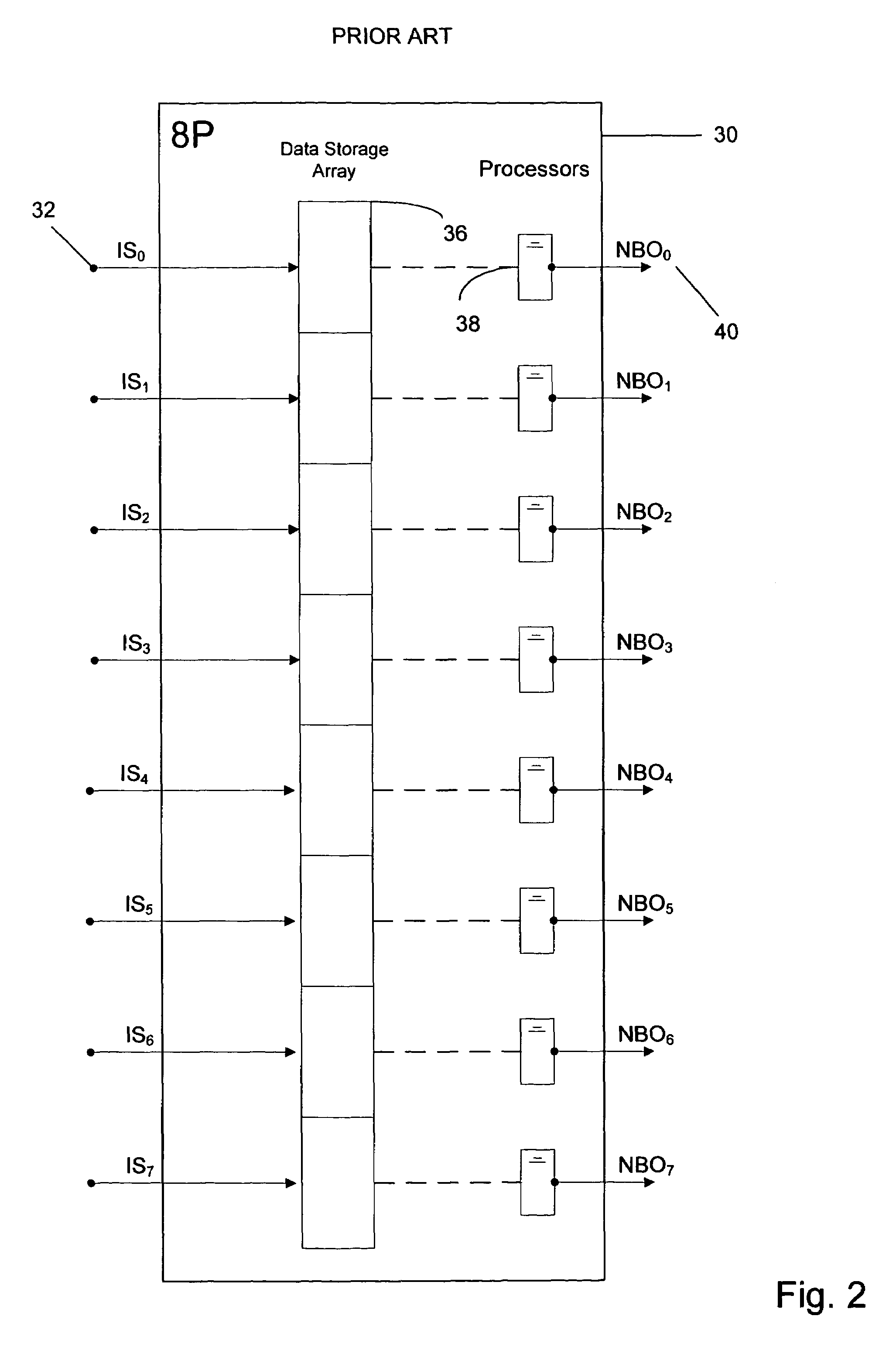Emulation processor interconnection architecture
a technology of interconnection and processor, applied in the direction of cad circuit design, program control, instruments, etc., can solve the problems of reducing operating speed, increasing the number of emulation processors required to efficiently verify the design, and consuming to fabricate the design into silicon, so as to reduce the amount of area, interconnection and power dedicated, and improve the efficiency of the design verification system.
- Summary
- Abstract
- Description
- Claims
- Application Information
AI Technical Summary
Benefits of technology
Problems solved by technology
Method used
Image
Examples
Embodiment Construction
[0029]With reference to the figures, the presently disclosed hardware design verification system and methods for the same will be discussed herein.
[0030]FIG. 1 depicts a prior art hardware design verification system 8 implementing 2,048 emulation processors according to the current state of the art. A number of emulation clusters 10 make up the system. The emulation clusters 10 are interconnected by signal busses 14, 16 and multiplexers 18. Each cluster outputs a number of node bit outs (NBO) 12 for a total of 2,048 NBOs. Each of the 2,048 NBOs meet to form a first NBO bus 14. The first NBO bus 14 carrying all 2,048 bits is then passed into the multiplexers 18 on signal busses 16. The multiplexers 18 select one of the 2,048 signals and output IS signal 20, which is passed back into each emulation cluster 10. Thus, each bus 16 carries all 2,048 NBOs as inputs to each of the multiplexers 18, which select a signal for input to the emulation clusters 10.
[0031]It should be noted with ref...
PUM
 Login to View More
Login to View More Abstract
Description
Claims
Application Information
 Login to View More
Login to View More - R&D
- Intellectual Property
- Life Sciences
- Materials
- Tech Scout
- Unparalleled Data Quality
- Higher Quality Content
- 60% Fewer Hallucinations
Browse by: Latest US Patents, China's latest patents, Technical Efficacy Thesaurus, Application Domain, Technology Topic, Popular Technical Reports.
© 2025 PatSnap. All rights reserved.Legal|Privacy policy|Modern Slavery Act Transparency Statement|Sitemap|About US| Contact US: help@patsnap.com



